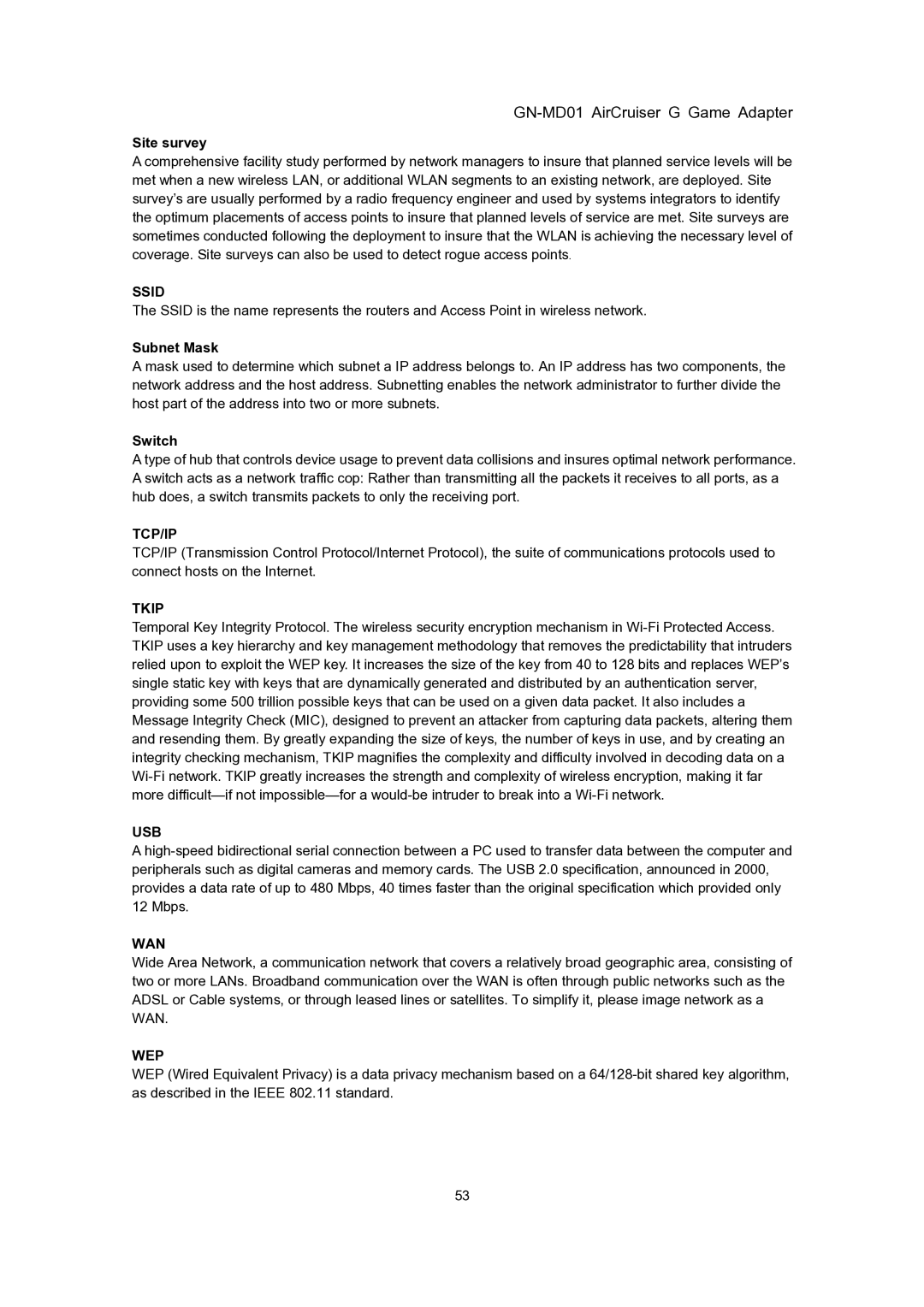GN-MD01 AirCruiser G Game Adapter
Site survey
A comprehensive facility study performed by network managers to insure that planned service levels will be met when a new wireless LAN, or additional WLAN segments to an existing network, are deployed. Site survey’s are usually performed by a radio frequency engineer and used by systems integrators to identify the optimum placements of access points to insure that planned levels of service are met. Site surveys are sometimes conducted following the deployment to insure that the WLAN is achieving the necessary level of coverage. Site surveys can also be used to detect rogue access points.
SSID
The SSID is the name represents the routers and Access Point in wireless network.
Subnet Mask
A mask used to determine which subnet a IP address belongs to. An IP address has two components, the network address and the host address. Subnetting enables the network administrator to further divide the host part of the address into two or more subnets.
Switch
A type of hub that controls device usage to prevent data collisions and insures optimal network performance. A switch acts as a network traffic cop: Rather than transmitting all the packets it receives to all ports, as a hub does, a switch transmits packets to only the receiving port.
TCP/IP
TCP/IP (Transmission Control Protocol/Internet Protocol), the suite of communications protocols used to connect hosts on the Internet.
TKIP
Temporal Key Integrity Protocol. The wireless security encryption mechanism in
USB
A
WAN
Wide Area Network, a communication network that covers a relatively broad geographic area, consisting of two or more LANs. Broadband communication over the WAN is often through public networks such as the ADSL or Cable systems, or through leased lines or satellites. To simplify it, please image network as a WAN.
WEP
WEP (Wired Equivalent Privacy) is a data privacy mechanism based on a
53
